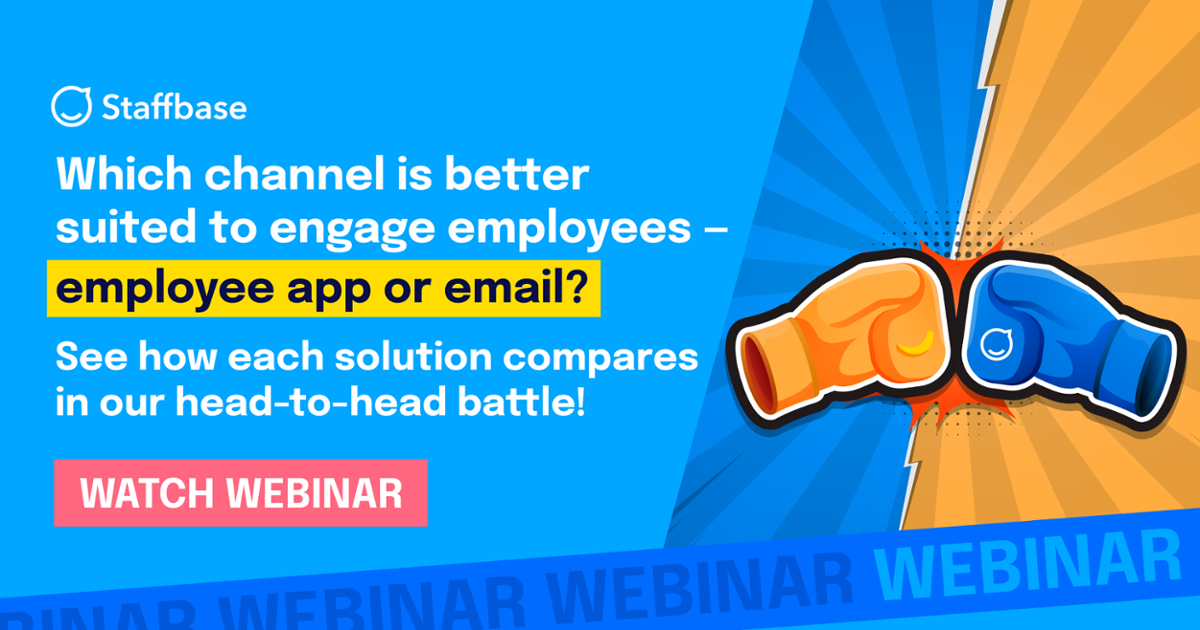Your Complete Guide to Employee Engagement Surveys

Are you looking to create an employee engagement survey but you’re not sure where to start? If that sounds like you, then you’re in the right place. In this comprehensive guide to employee engagement surveys, we’ll be covering all aspects of this important topic, from the value they’ll bring to your employees to actionable insights on improving employee engagement to survey results.
We’ve also included 20 key employee engagement questions for you to use in your own survey and provided a step-by-step guide on how to run it. By the end, you’ll be well-placed to create and manage a highly effective survey, analyze your results, and make positive changes based on employee feedback to boost employee engagement, morale, and productivity.
Ready to learn all about employee engagement surveys? Then let’s dive in!
What is an employee engagement survey?
An employee engagement survey is a tool used by organizations to gather insights and data on their employees’ level of satisfaction in the workplace. Typically such a survey consists of a range of questions covering topics such as work-life balance, team dynamics, workload distribution and organization, management practices, and company culture. Employee engagement surveys are typically presented to members of staff via email, a dedicated website, an employee intranet, or an app.
Question formats on an employee engagement form can vary, depending on the data the organization is seeking to collect. Multiple choice and closed questions are ideal for gathering measurable and comparable data points, while open questions are used for collecting anecdotal evidence that gives employees the chance to speak more freely about their own experiences.
Why are employee engagement surveys important
Employee engagement surveys are extremely important. They enable an organization to gain valuable insights into the feelings and perspectives of their employees and better understand the collective mindset of the workforce. This data helps team leads identify problem areas and opportunities for improvement.
With the collected data and insights from a survey, management teams can make positive changes to workplace practices which boost staff morale and increase employee engagement. In doing so, organizations can improve the employee experience and drive workforce success.

Benefits of employee engagement survey
Employee engagement surveys are an invaluable tool for organizations seeking to boost productivity, support employees, and create a positive working environment. Let’s look at the host of benefits you can expect to experience when you conduct this type of survey with your valued members of staff.
Gauge the mood and sentiments of the workforce
A major benefit of conducting an annual employee engagement survey is that it helps company and team leaders better understand levels of employee satisfaction and gain true insights into the experiences of the people working for the organization.
Uncover workplace challenges
Surveys are an opportunity for employees to open up anonymously about work-related issues. When employers are asked the right questions, team leads learn of concerns that they may otherwise be unaware of, including those regarding management practices, work-life balance, and even team dynamics.
Enhance internal communication
When employees are given an appropriate platform to air their views and concerns, a culture of open communication is fostered within the workplace as a whole. This promotes an environment of increased trust and transparency, improving collaboration and bolstering employee morale.
Boost morale and motivation
Companies can significantly boost the morale and motivation of their employees by conducting employee engagement surveys. Firstly, this effectively demonstrates their interest in hearing their employees’ views which helps employees feel seen and heard. Secondly, when employee feedback leads to tangible improvements in the workplace, employees feel taken seriously and that they have agency in creating positive change for themselves and their coworkers.
Reduce staff turnover
By letting your employees know that you care about what’s important to them and addressing issues they raise, they feel valued and heard by the organization. This can significantly reduce turnover rates as well as attract talent looking for a company where they feel seen and heard.
Read more about the Employee Net Promoter Score
Boost productivity and drive engagement
By identifying factors that enhance or hinder employee engagement, team leaders can put in place effective and highly targeted strategies to increase engagement across the company. When employees are more engaged and motivated, productivity, creative thinking, and collaboration naturally soar.
Inform training and development
Surveys are a useful tool in highlighting skill shortage areas in the workforce that need to be addressed with specific support or training. Insights from a survey ensure team leads are addressing the most pressing skills gaps first and prioritizing individuals with the greatest need with relevant training.
Measure progress
When employees are asked closed and multiple choice questions on annual employee engagement surveys, management teams have fixed data points that enable them to easily measure progress over time and compare the effectiveness of any improvements that are implemented.
Become more inclusive
An employee engagement survey is an opportunity for employers to identify groups within their organization who feel less engaged or valued, giving these individuals the chance to have their voices heard. The resulting survey data enables management to implement relevant diversity and inclusivity initiatives to ensure all groups are acknowledged within the company and all needs are met.
Learn more about Diversity and Inclusion in the workplace!
Inform decision making
Survey data, whether quantitative or qualitative, enables an organization to make data-backed decisions regarding policies, procedures, and strategic initiatives. It can also support internal bids for change as the extensive data a survey provides is a persuasive tool in bringing all stakeholders on board.
Boost productivity
A major advantage to conducting a survey on employee engagement is the boost it brings to employee productivity. Not only do engaged employees perform better, but seeking their feedback boosts morale and well-being which enhances overall productivity too.
How to create an employee engagement survey
Let’s dive into the steps you need to take to create an employee engagement survey that will produce the insights and data you need to boost employee engagement and drive productivity.
1. Define the survey objectives
Your first step in this process is to clearly outline the goals of the survey. These objectives will ensure the survey questions you produce lead to the outcomes you require, enable you to track your progress, and provide you with benchmarks by which you can measure the survey’s success. Some examples of the goals you might like to define at this stage could include:
Improving employee engagement
Streamlining internal communication
Boosting employee morale
Increasing organizational efficiency
Identifying key areas of improvement
Gauging the sentiment of the workforce
2. Craft your survey questions
With your goals defined, you’re ready to start drafting your survey questions. When writing your questions, your objectives should be your foundation. For example, if your goal is to boost employee morale, you will need to ask questions related to what currently causes satisfaction and dissatisfaction for employees in the workplace and ask for their feedback regarding possible improvements. Try to ensure your questions are as specific, relevant, and, crucially, measurable as possible. To do this, a combination of open, closed, and multiple-choice questions should be adopted. Multiple choice and closed questions will enable you to gather quantitative data that is measurable and comparable, while open-ended questions are an opportunity to gather qualitative, anecdotal evidence that provides you with context and insights.
3. Distribute the survey among employees
There are numerous options open to employers when it comes to distributing employee engagement surveys among their employees. While email newsletters are a popular choice thanks to the ease with which you can track responses and implement personalization, employers might also choose to use employee apps to support users who prefer to use a handheld device. Intranet services also work well as a distribution platform, as they bring together surveys, news, and updates in a centralized, interactive workplace forum. Other options used by organizations include QR codes, text messages, internal social media, and even physical copies, where necessary.
4. Analyze the results
Once your surveys have been distributed and completed, you’ll need to collect the data and analyze it. This step is crucial as it enables you to turn raw data into actionable insights and improvements, bringing about positive change in the workplace.
When you start the analyzing process, it can be helpful to organize the data into different categories, for example, by question or theme. This will make it easier to closely study and identify trends, patterns, and standout areas of improvement. To analyze the quantitative data, i.e., data that has come from multiple-choice or closed questions, you may want to conduct quantitative analysis techniques such as descriptive statistics, inferential statistics, or correlation analysis to help you interpret the responses as accurately as possible. To analyze the qualitative data, i.e., anecdotal insights that answer open questions, you could conduct qualitative analysis techniques such as thematic analysis, content analysis, or narrative analysis to help you fully understand the data.
5. Share your findings and take action
Your final step in creating an effective and compelling employee engagement survey is to communicate your findings to team leads, stakeholders, and the workforce as a whole. Using your analysis of the data and the insights you’ve uncovered, it’s important that you additionally share a plan of action outlining how you will implement positive changes and address any challenges that have been brought to your attention. The Staffbase Employee App enables employees to digest survey findings and solution proposals at their own leisure on a handheld device, while the Staffbase Intranet is an interactive hub for news and updates that’s ideal for communicating survey results to all staff members at once. Finally, Email Newsletters ensure you can reach each member of staff in their own inbox as well as track open rates, clicks, and engagement in the survey results being communicated.
Best practices for employee engagement survey
In order to drive valuable insights and promote positive change in the workplace, you’ll want to stick to the following best practices when conducting your employee engagement survey.
Ensure your questions align with your objectives
To gather the data you need to meet your survey’s goals, you’ll need to craft thoughtful and relevant questions that fully align with your initial objectives. Try not to stray into areas that are too general, or to use questions you’ve copied from other surveys. Instead, write questions that seek to fully understand your workforce and address pressing issues that help you fill knowledge gaps.
Encourage honest feedback by offering fully anonymity
If you’d like to really know what your employees think and feel about the experience of working for your organization, it’s important that you clearly communicate the confidential nature of your survey. By installing and communicating strong privacy measures, you’re likely to receive more candid — and, therefore, useful — feedback than if participants are not given anonymity.
Clearly communicate how you will use the data
If you want your employees to fully engage with the survey, you’ll need to let them know how you will use the feedback you collect. By informing your team of how you plan to act on the survey results, they are more likely to feel they have a voice in how the workplace and its culture are managed and that they are being actively listened to. The Staffbase Employee App is the perfect tool for communicating to employees your intentions with the employee engagement survey and clarifying exactly how their data will be used.
Share key findings and act on the feedback
It’s important that you act quickly on the results of your employee engagement survey. You want the workforce to know that you have taken their feedback on board and are using it as the foundation for positive change. If feedback is not acted upon, employees will be discouraged from participating in future surveys, and their trust in the management may diminish.
Additionally, members of staff will be curious to learn of the key findings of the survey and how their coworkers feel about ongoing issues in the workplace. Sharing the key findings of the survey is a good way to promote transparency, build trust, and encourage future participation. We’d recommend utilizing the Staffbase Intranet for sharing key findings from the survey and outlining how you plan to act on the feedback you’ve collected. Consider uploading graphs and infographics on the platform that communicate trends, patterns, and valuable insights.
Other best practices you may wish to incorporate include:
Pilot testing your survey with a small representative group of employees to iron out any errors or inconsistencies
Using a multi-channel distribution approach to ensure all employees have access, irrespective of their location
Being thoughtful about the timing of your survey, i.e., avoiding busy times for the company and allowing participants 2-3 weeks to complete it.
Employee engagement survey questions
Take a look at the following employee engagement survey questions for an idea of what you should include in your survey and why.
Question 1: How satisfied are you with your current role and responsibilities?
Why include this question?
Asking your employee about their level of satisfaction with their role and responsibilities will provide you with hard data on overall job satisfaction in your workplace. With this knowledge, you’ll be better placed to make improvements that positively impact employee retention and productivity.
Question 2: Do you feel valued and recognized for your work?
Why include this question?
This question gets to the heart of how an employee feels in their role. Feeling valued and recognized for the work they do significantly bolsters an individual’s motivation, sense of morale, and their engagement with the organization as a whole. When an employee receives regular recognition for their work, a culture of appreciation is nurtured that enhances performance.
Question 3: Do you have the tools and resources needed to do your job effectively?
Why include this question?
It can sometimes be hard for management teams to gauge if every employee has what they need to do their job well, particularly in larger organizations. When resources are lacking, it doesn’t just lead to inefficiency, employees can also feel frustrated, in turn lowering engagement. Asking this question is a way of keeping tabs on resources and tool availability to ensure everybody has what they need.
Question 4: Do you understand the company’s vision and goals?
Why include this question?
This question helps management to understand how clearly the company’s goals are being communicated across teams. When this is well understood, employees can better align their tasks with the company’s overall vision; it also helps to foster a sense of purpose across the workforce.
Question 5: Do you believe the leadership team communicates effectively?
Why include this question?
Clear and effective communication from team leaders and management fosters a company-wide feeling of transparency and trust. It also helps employees align their tasks with company priorities.
Question 6: Do you receive regular feedback on your performance?
Why include this question?
In order to keep performance standards high, employees should be given regular feedback from their colleagues and managers. Regular performance reviews keep employees up to date on what is expected from them and fosters a culture of continuous development.
Question 7: How often do you feel stressed or overwhelmed at work?
Why include this question?
High stress levels can impact morale, productivity, and job satisfaction. By identifying stress levels, team leaders can help to prevent burnout, implement changes that ease the burden on particular employees, and improve the team’s well-being.
Question 8: Do you see opportunities for professional growth and development?
Why include this question?
When employees see opportunities for professional growth and development within their organization, they are more likely to stay motivated in their role and engaged in their own career journey at the company. Offering such opportunities is key to talent retention and reducing staff turnover.
Question 9: How would you rate the work-life balance at our company?
Why include this question?
This question is important for gauging how employees feel about balancing their work and home lives and is crucial to job satisfaction and reducing burnout.
Question 10: Do you feel your opinions and ideas are valued by your team?
Why include this question?
To promote a sense of belonging among the team, it’s important their opinions are valued and heard. When this is prioritized, innovation and creativity flourish.
Question 11: How well do you think different departments collaborate?
Why include this question?
Harmonious workplaces typically place importance on inter-departmental collaboration. This is because it helps prevent silos and improves operational performance.
Question 12: Do you feel that the company supports a diverse and inclusive workplace?
Why include this question?
In order to attract a wide range of talent and run a fair and innovative workplace, diversity and inclusion should always be high on the agenda. While you may consider your workplace to be diverse and inclusive, it will be important to assess if your employees feel the same way as it can be easy to overlook the experiences of underrepresented groups.
Question 13: How likely are you to recommend our company as a great place to work?
Why include this question?
This question helps you assess how likely it is that your employees will speak positively about the organization and to gauge their sense of pride in working there. It will also reflect their general feeling of satisfaction in the workplace.
Question 14: Do you trust the leadership team to make the right decisions for the company?
Why include this question?
Trust in the leadership team plays a key role in employee confidence and morale. It also affects productivity. If the workforce does not trust the decision-making of the management, they will be less encouraged to perform the tasks needed to see those decisions through.
Question 15: Are you satisfied with the benefits and compensation provided?
Why include this question?
Fair compensation and benefits packages are essential for attracting and retaining talent. Understanding how satisfied employees are with their salaries can help an organization be more competitive.
Question 16: Do you feel there is open communication between employees and management?
Why include this question?
To ensure employees feel seen and heard, open communication between employees and management should be encouraged. This boosts trust, promotes transparency, and increases overall engagement.
Question 17: How satisfied are you with the training and development opportunities?
Why include this question?
When employers invest in an employee’s professional development, they’re likely to feel more loyal to the company and more committed to staying over the longer term. Training and development opportunities also fill skill gaps and boost performance.
Question 18: Do you feel the company’s culture promotes a positive work environment?
Why include this question?
Employees typically work more effectively in a positive work environment. While you may believe your work environment is a positive one, it’s important to ask this question to gauge the feelings of your employees on the subject and make changes that can improve their experience working for you. They may be able to highlight issues or challenges that you are unaware of.
Question 19: Are you satisfied with the opportunities to work on new and exciting projects?
Why include this question?
The opportunity to be involved in new and interesting work projects is found to increase job satisfaction and feed into a feeling of personal fulfillment for employees. It’s therefore important to assess how frequently the chance arises and how this can be increased.
Question 20: How well do you think the company responds to employee feedback?
Why include this question?
Demonstrating a willingness to listen to feedback and make improvements reinforces a culture of engagement and ongoing positive change. If employees don’t feel as though their feedback is acted upon, it’s important for the organization to recognize and rectify this failure in order to boost morale and engagement.

How to increase employee engagement survey participation
It’s no easy task boosting employee participation in a survey, particularly during busy periods. There are, however, some proven tips and tricks that can significantly increase participation and employee engagement in the survey. One proven tactic in boosting engagement is to clearly communicate to the workforce the survey’s importance and purpose. When participants are clear on why they are being requested to participate, they are immediately more invested in the process and its outcome. This is particularly true when the purpose of the survey is to bring about changes that enhance and improve their working lives, solve problems, and boost productivity.
Another great way to boost participation and engagement in your survey is to offer incentives. These might be gift cards, extra time off, or entrance into a raffle or competition. For this to be effective, you’ll want to be sure to offer incentives of real worth that are desirable to your employees and that reflect the time they are putting into completing the questionnaire.
Including a deadline for survey completion can instill a sense of urgency in participants, increasing the number of responses you might otherwise get. Consider setting email reminders or app notifications which alert employees of the deadline’s approach so that potential participants don’t forget to take part. When this strategy is combined with an endorsement from a senior member of staff, such as a message highlighting the survey’s significance, you’ll find employees are even more likely to engage with it.
Finally, the easiest way to get your employees to engage with an employee engagement survey is to make the survey concise, easy to follow, and user-friendly. Let participants know at the start how much time is needed to complete the survey, and provide it on a platform or app that is optimized to ensure a positive user experience.
How to announce a survey
To ensure the largest number of employees are informed, it’s important to employ a multi-channel approach when announcing a survey. A multi-channel approach involves using a wide range of communication tools such as email, apps, SMS, QR codes, and the workforce intranet, as this widens access and enables participants to use the method that suits them best.
Begin your announcement with a concise statement relaying the purpose of the survey, how to take part, how the data will be used, and the importance of employee feedback. Here, you could choose to include a message from a senior member of management endorsing the survey to further encourage participation. We’d recommend using the Staffbase Employee App to share the news of the survey and reach employees directly on their mobile devices.
With the Staffbase Employee App you can:
Create a news post including a link to the survey, key details, and a reminder of the deadline
Send a push notification alerting employees to the new survey announcement news post to capture their attention immediately.
Another effective platform for announcing your survey is on the Staffbase Intranet. Here you can communicate the launch of your survey and all the details needed to take part. With employees spending considerable amounts of time on this digital and interactive hub, they’ll be sure not to miss it.
Finally, Staffbase Email Newsletters are a great way to showcase your survey announcement. You can design your own eye-catching email newsletter that’s delivered straight to your employees’ inboxes. The advantage of email is that employees can take their time to digest all the information about the survey at their own leisure on their laptop or phone.
Employee engagement survey results
Once your survey has been completed and the results analyzed, your priority will be to share the outcome with employers, stakeholders, and management. Survey participants will want to better understand their colleagues, the mood of the workforce as a whole, and upcoming changes or improvements they might be able to expect, while stakeholders will be interested in how engaged the workforce is, trends in behavior or attitude, and the challenges that will need to be addressed to boost engagement.
Staffbase is your go-to platform for sharing survey results, with the Staffbase Employee App, Staffbase Intranet, and Staffbase Email Newsletters enabling you to reach your employees via their preferred communication method. The advantage of using the app is that employees can access the survey results via a handheld device when they are on the go, while the intranet is a public forum and announcement space that lends itself to announcements, updates, and results. The email newsletter option reaches the workforce in their inboxes, enabling you to track open rates and engagement. This data informs you of who still needs to be alerted about the survey results and whether another communication method is required.
How to improve employee engagement with a survey
As we have seen, an employee engagement survey is an invaluable tool for uncovering the sentiments of your workforce. A survey will help you better understand how engaged your employees are with your organization, how committed they are to their roles, their satisfaction with the culture and its practices, and what improvements you can make to boost productivity, engagement, and morale.
We hope that you now:
Feel confident in running an effective employee engagement survey
Know which questions to ask
Understand the survey creation process from start to finish
Know which tools can help you communicate the survey and its results to your employees in a transparent, compelling, and streamlined fashion.
If you’d like to learn more about our employee engagement and communication products, head over to our product pages now, or learn more about workplace tools and best practices over on our blog.










